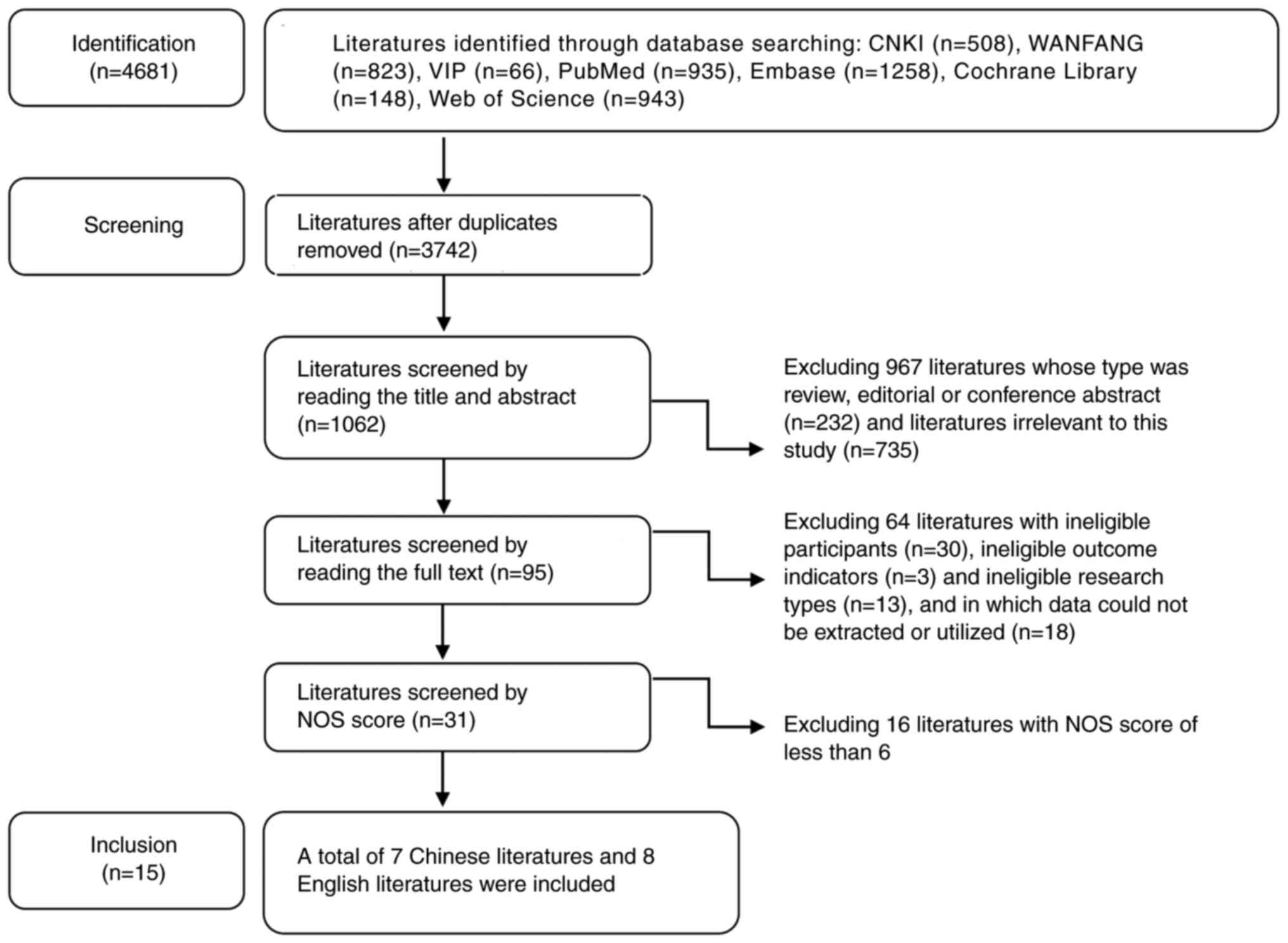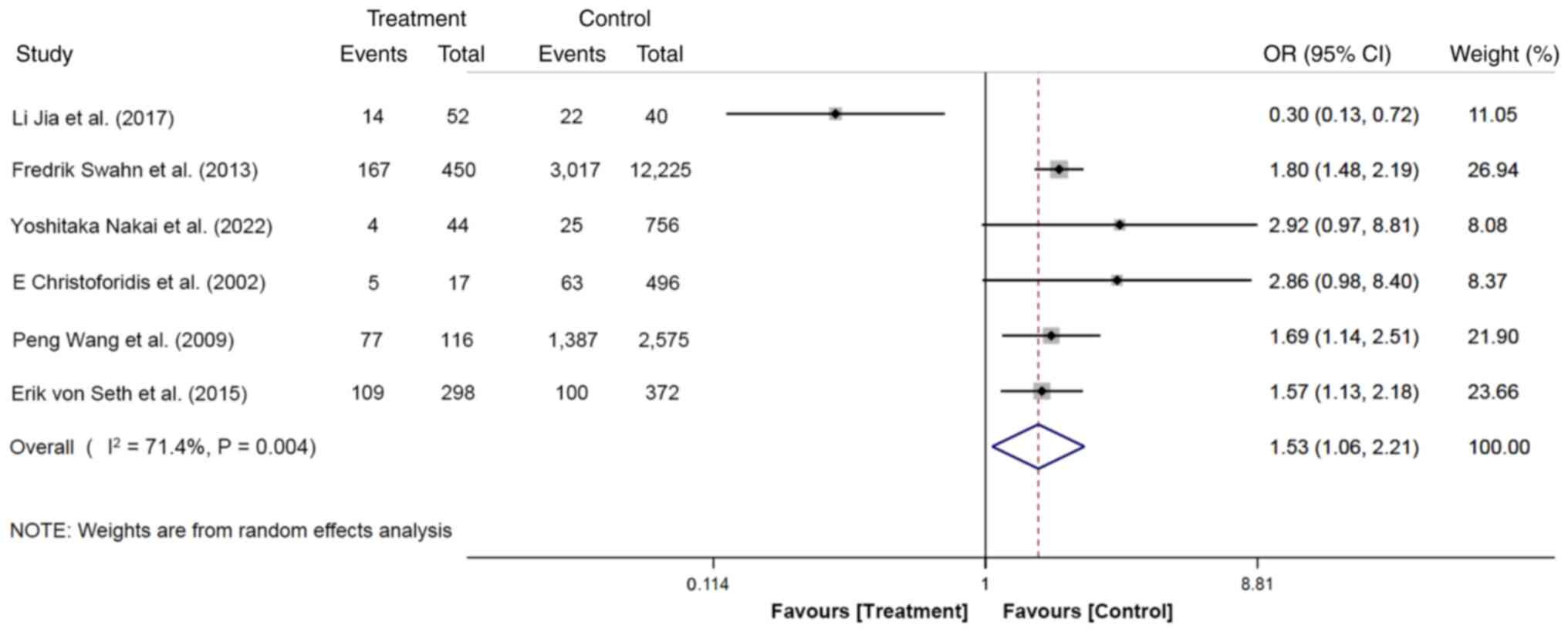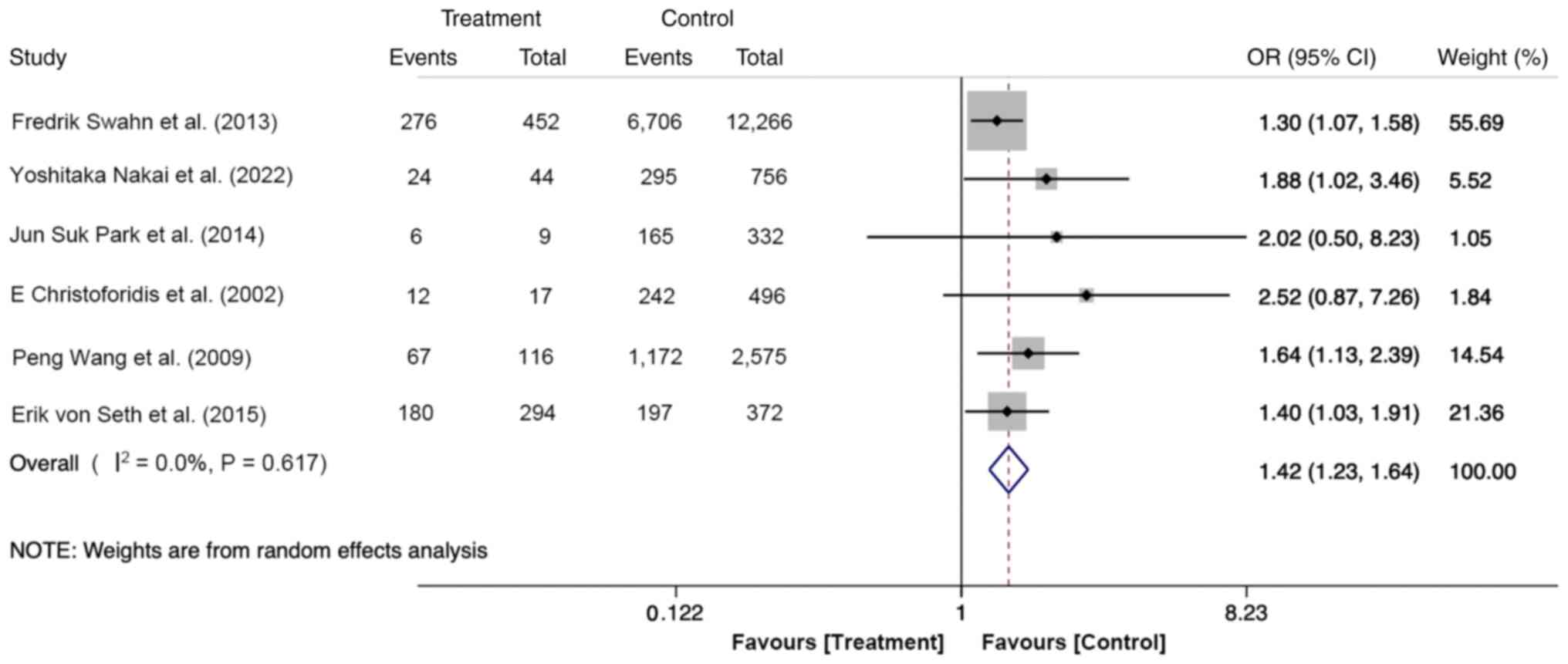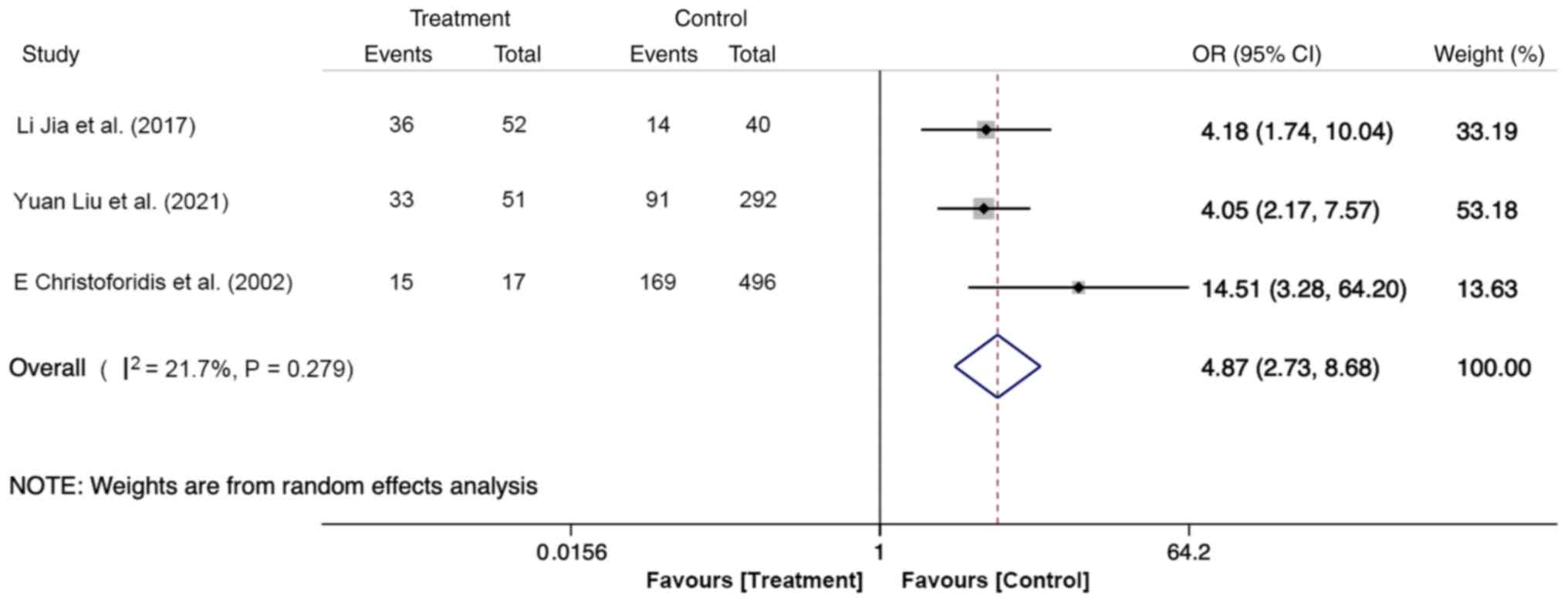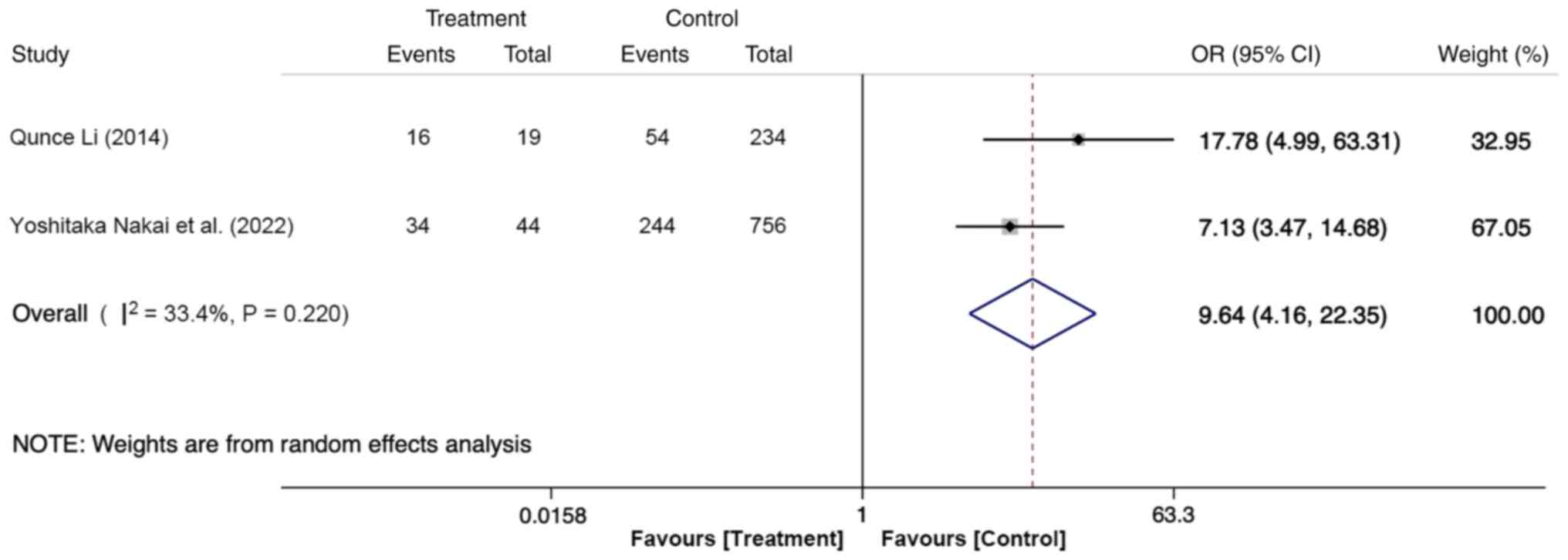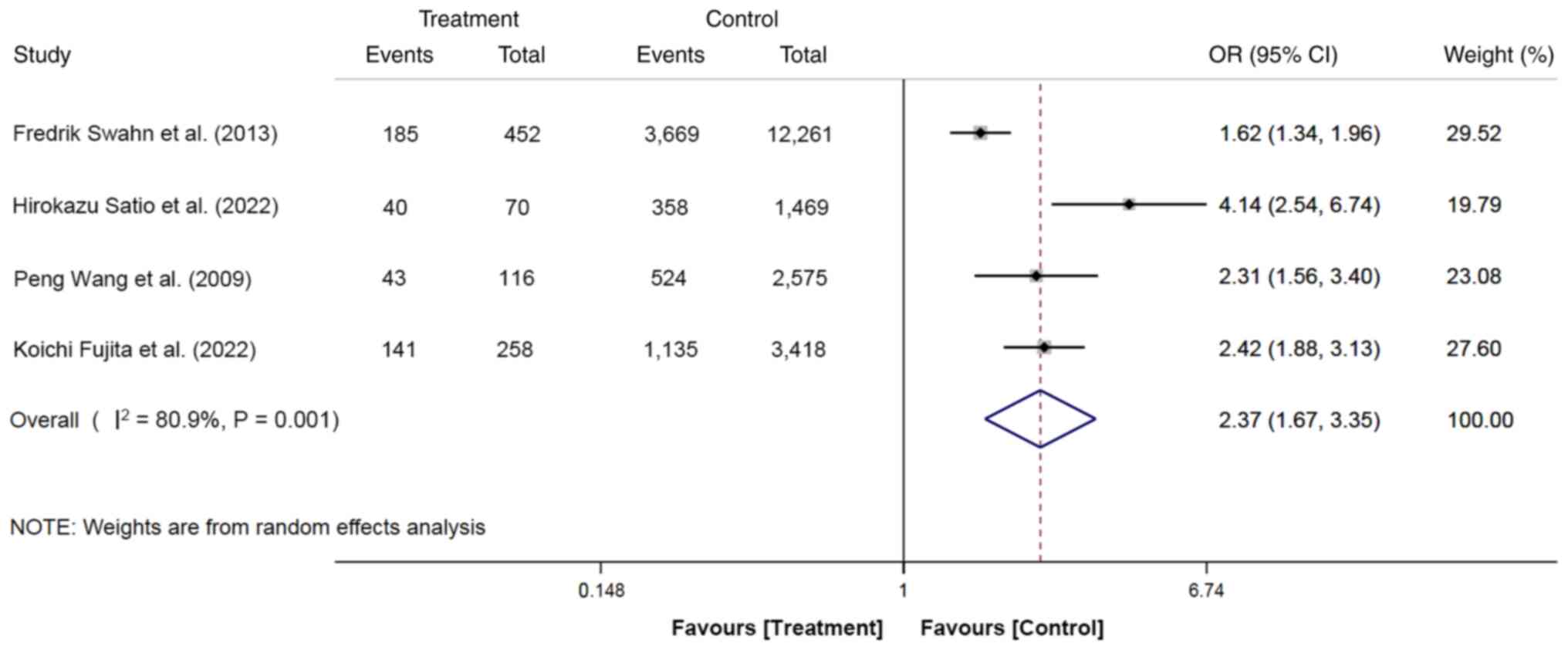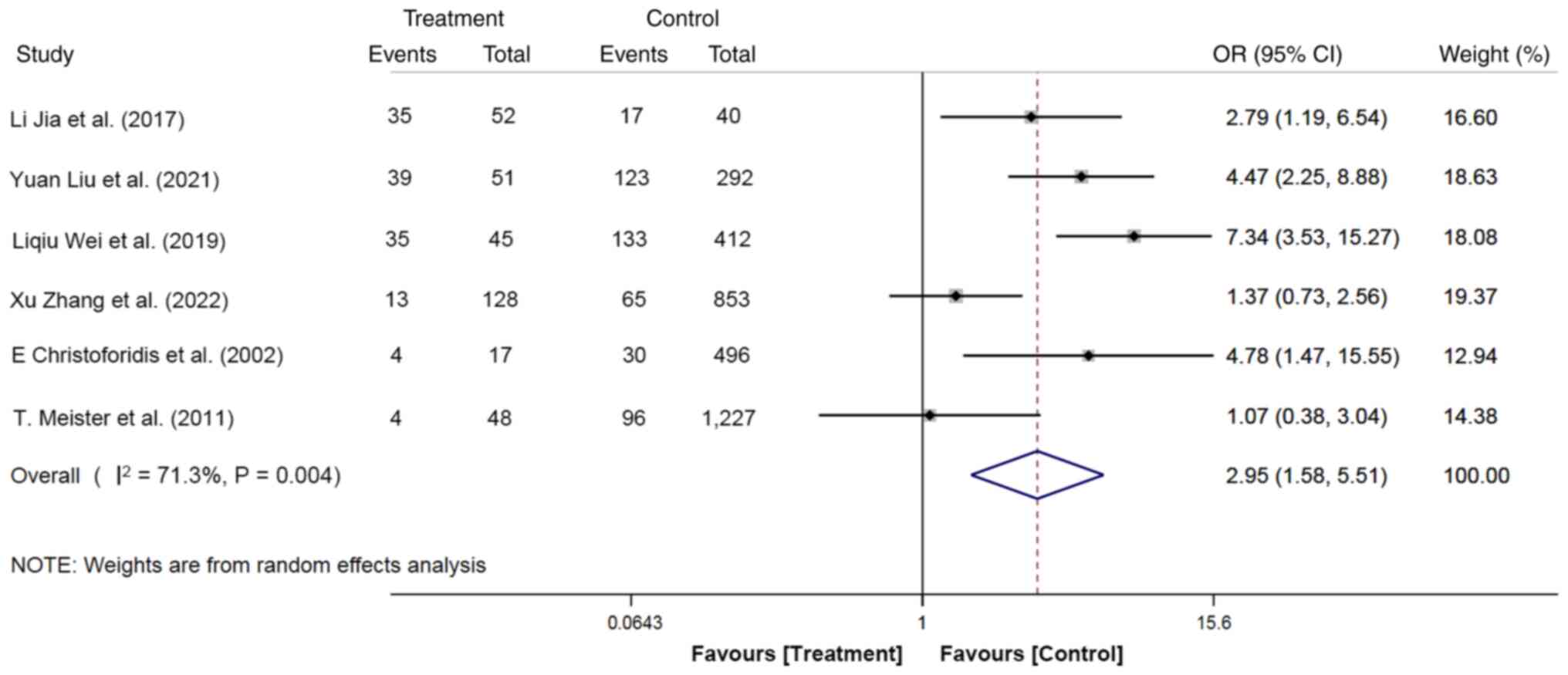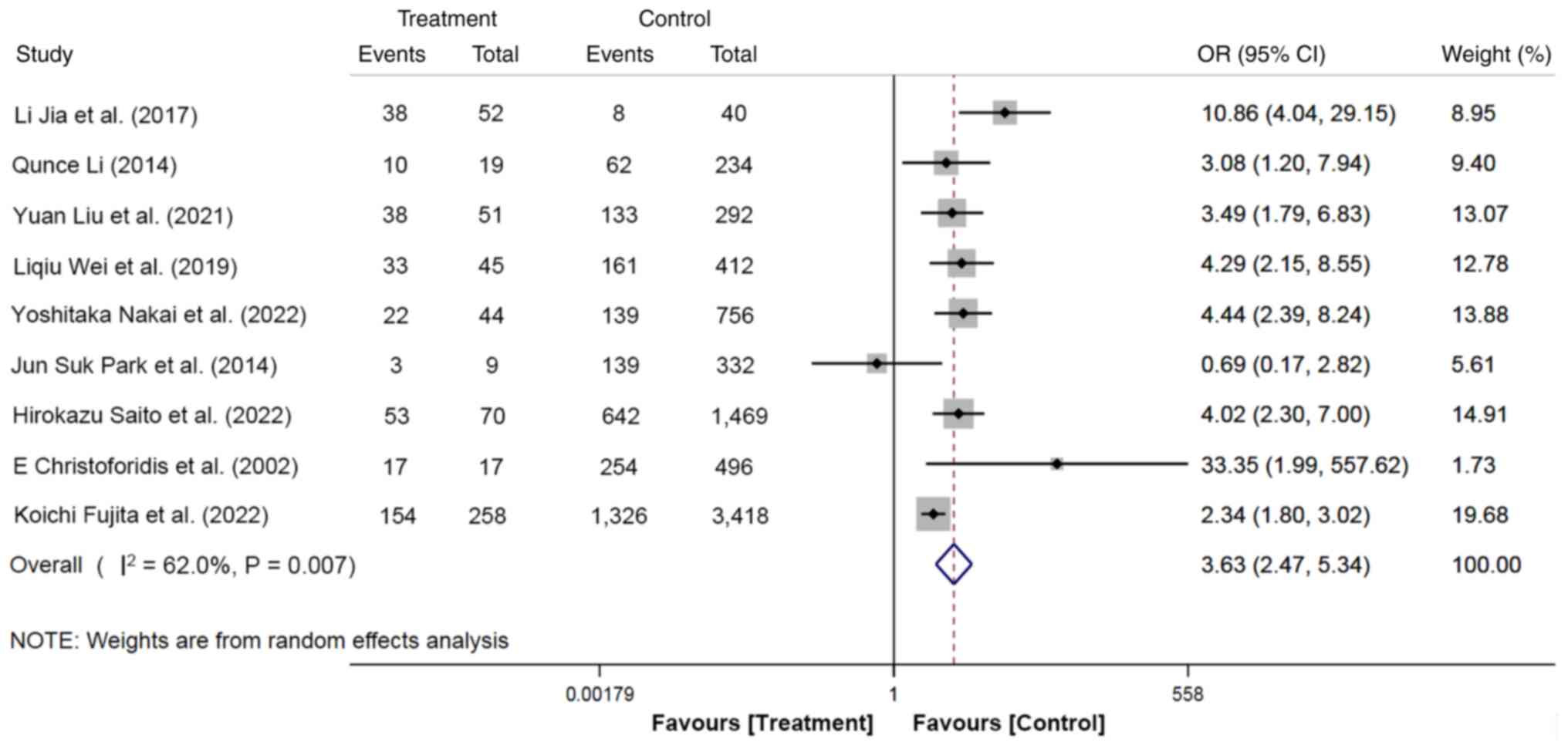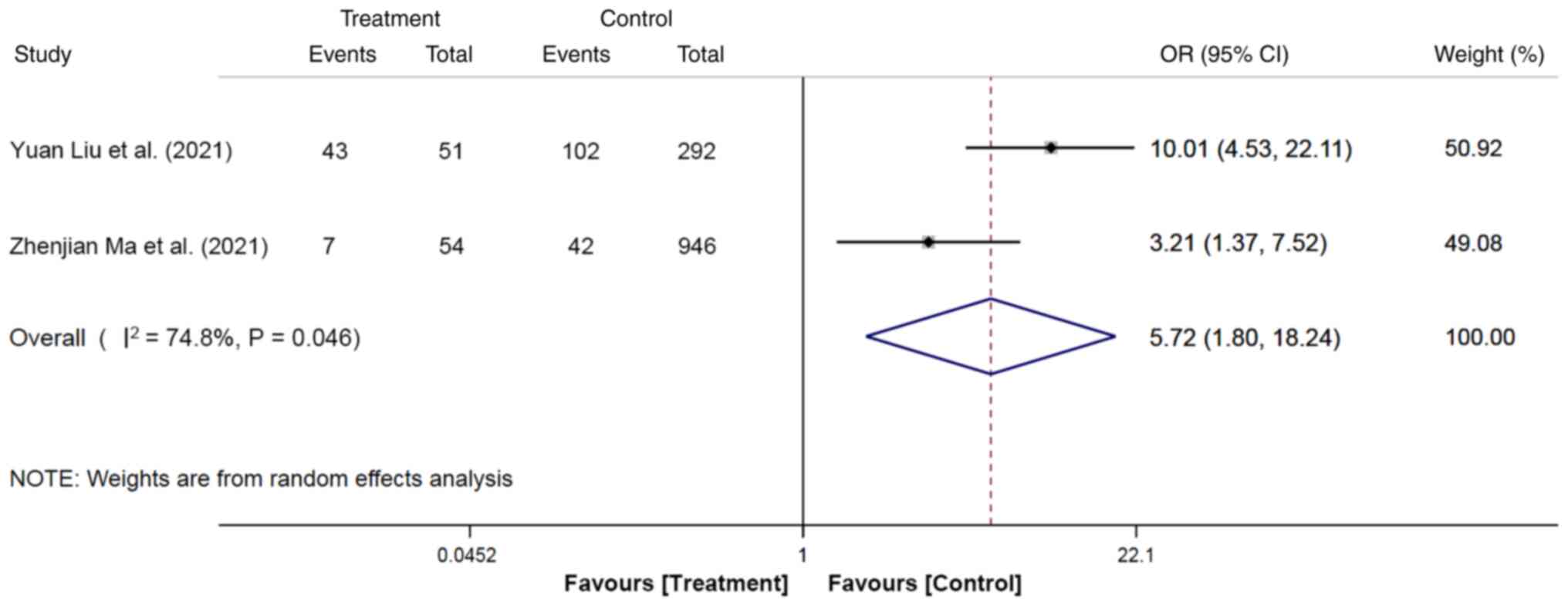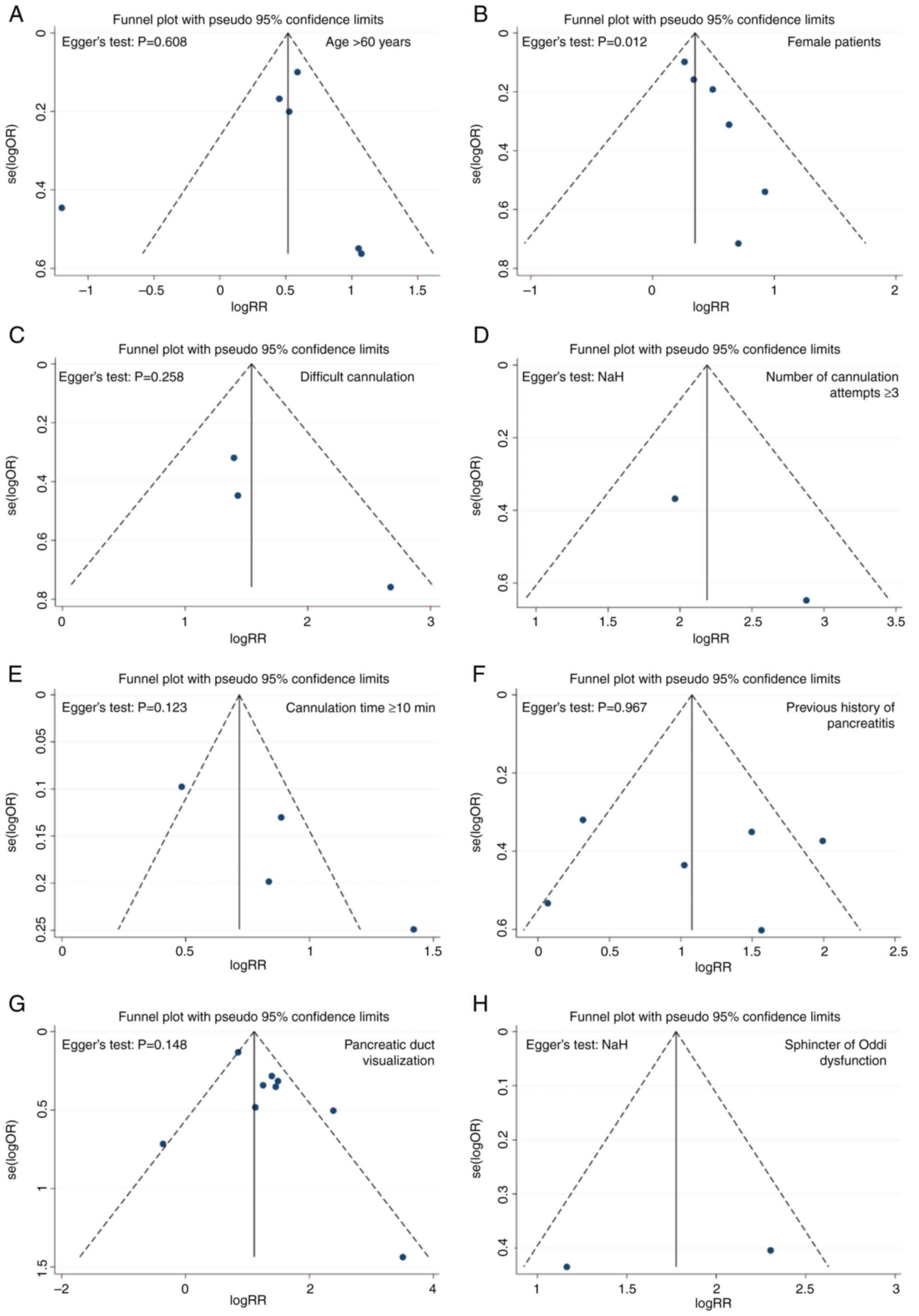|
1
|
Huang-Fu L, Qian YH and Qian MJ: The
correlation between postoperative complications of ERCP and quality
of life after discharge in patients with choledocholithiasis. Ann
Palliat Med. 10:7794–7801. 2021.PubMed/NCBI View Article : Google Scholar
|
|
2
|
Gyedu A, Adae-Aboagye K and Badu-Peprah A:
Prevalence of cholelithiasis among persons undergoing abdominal
ultrasound at the Komfo Anokye Teaching Hospital, Kumasi, Ghana.
Afr Health Sci. 15:246–252. 2015.PubMed/NCBI View Article : Google Scholar
|
|
3
|
Sousa M, Pinho R, Proença L, Rodrigues J,
Silva J, Gomes C and Carvalho J: Choledocholithiasis in elderly
patients with gallbladder in situ - is ERCP sufficient? Scand J
Gastroenterol. 53:1388–1392. 2018.PubMed/NCBI View Article : Google Scholar
|
|
4
|
Saito H, Kadono Y, Shono T, Kamikawa K,
Urata A, Nasu J, Imamura H, Matsushita I and Tada S: Remaining
issues of recommended management in current guidelines for
asymptomatic common bile duct stones. World J Gastroenterol.
27:2131–2140. 2021.PubMed/NCBI View Article : Google Scholar
|
|
5
|
Masuda S, Koizumi K, Shionoya K, Jinushi
R, Makazu M, Nishino T, Kimura K, Sumida C, Kubota J, Ichita C, et
al: Comprehensive review on small common bile duct stones. World J
Gastroenterol. 29:1955–1968. 2023.PubMed/NCBI View Article : Google Scholar
|
|
6
|
Saito H, Kakuma T and Matsushita I: Risk
factors for the development of post-endoscopic retrograde
cholangiopancreatography pancreatitis in patients with asymptomatic
common bile duct stones. World J Gastrointest Endosc. 11:515–522.
2019.PubMed/NCBI View Article : Google Scholar
|
|
7
|
Koksal AR, Boga S, Alkim H, Sen I,
Neijmann ST and Alkim C: Chemerin: A new biomarker to predict
postendoscopic retrograde cholangiopancreatography pancreatitis.
Eur J Gastroenterol Hepatol. 28:714–721. 2016.PubMed/NCBI View Article : Google Scholar
|
|
8
|
Yang SY, Wang X, Zhang R, Zheng L and Guo
X, Pan Y and Guo X: Effects of cannulation time on post-endoscopic
retrograde cholangiopancreatography pancreatitis. Chin J Dig
Endosc. 34:250–253. 2017.(In Chinese).
|
|
9
|
Feng BL, Yu HH and Shen W: Ursodeoxycholic
acid combined with bezafibrate in the treatment of refractory
primary biliary cholangitis: A meta-analysis. Zhonghua Gan Zang
Bing Za Zhi. 27:304–311. 2019.PubMed/NCBI View Article : Google Scholar : (In Chinese).
|
|
10
|
Jia L, Xu X and Han J: Risk Factors for
Postoperative Pancreatitis in Patients Undergoing Endoscopic
Retrograde Cholangiopancreatography. J Frontiers Med. 7:153–155.
2017.
|
|
11
|
Li Q: Analysis of Risk Factors Inducing
Pancreatitis after EST for Common Bile Duct Calculi. Med
Recapitulate. 20:2678–2680. 2014.
|
|
12
|
Liu Y, Xu J, Chen D and He X: Discussion
on related factors and countermeasures of postoperative
pancreatitis with ERCP. Chin J Endosc. 27:71–76. 2021.(In
Chinese).
|
|
13
|
Wei L, Fenghua C and Xiaodong Y: Related
factors of pancreatitis after endoscopic retrograde
cholangiopancreatography. Journal of Xinxiang Medical University.
36:181–184. 2019.
|
|
14
|
Ma Z, Wang X, Xu X, Guo Y and Chen Y:
Influencing factors of major complications after duodenoscope
retrograde cholangiopancreatography. Modern Digestion &
Intervention. 26:1004–1008. 2021.
|
|
15
|
Zhang X, Zhang J, Pei Z, Zhang H, Lin Y,
Yue P, Meng W, et al: Effect of nomogram model of gallbladder state
on pancreatitis after ERCP. Journal of Lanzhou University Medical
Sciences. 48:44–49. 2022.
|
|
16
|
Swahn F, Nilsson M, Arnelo U, Löhr M,
Persson G and Enochsson L: Rendezvous cannulation technique reduces
post-ERCP pancreatitis: A prospective nationwide study of 12,718
ERCP procedures. Am J Gastroenterol. 108:552–559. 2013.PubMed/NCBI View Article : Google Scholar
|
|
17
|
Nakai Y, Kusumoto K, Itokawa Y, Inatomi O,
Bamba S, Doi T, Kawakami T, Suzuki T, Suzuki A and Endoh B:
Emergency endoscopic retrograde cholangiopancreatography did not
increase the incidence of postprocedural pancreatitis compared with
elective cases: A prospective multicenter observational study.
Pancreas. 51:41–47. 2022.PubMed/NCBI View Article : Google Scholar
|
|
18
|
Park JS, Kim TN and Kim KH: Endoscopic
papillary large balloon dilation for treatment of large bile duct
stones does not increase the risk of post-procedure pancreatitis.
Dig Dis Sci. 59:3092–9098. 2014.PubMed/NCBI View Article : Google Scholar
|
|
19
|
Saito H, Kadono Y, Shono T, Kamikawa K,
Urata A, Nasu J, Imamura H, Matsushita I, Kakuma T and Tada S:
Increased post-endoscopic retrograde cholangiopancreatography
pancreatitis for choledocholithiasis without acute cholangitis. J
Gastroenterol Hepatol. 37:327–334. 2022.PubMed/NCBI View Article : Google Scholar
|
|
20
|
Christoforidis E, Goulimaris I, Kanellos
I, Tsalis K, Demetriades C and Betsis D: Post-ERCP pancreatitis and
hyperamylasemia: patient-related and operative risk factors.
Endoscopy. 34:286–292. 2002.PubMed/NCBI View Article : Google Scholar
|
|
21
|
Wang P, Li ZS, Liu F, Ren X, Lu NH, Fan
ZN, Huang Q, Zhang X, He LP, Sun WS, et al: Risk factors for
ERCP-related complications: A prospective multicenter study. Am J
Gastroenterol,. 104:31–40. 2009.PubMed/NCBI View Article : Google Scholar
|
|
22
|
Fujita K, Yazumi S, Matsumoto H, Asada M,
Nebiki H, Matsumoto K, Maruo T, Takenaka M, Tomoda T, Onoyama T, et
al: Multicenter prospective cohort study of adverse events
associated with biliary endoscopic retrograde
cholangiopancreatography: Incidence of adverse events and
preventive measures for post-endoscopic retrograde
cholangiopancreatography pancreatitis. Dig Endosc. 34:1198–1204.
2022.PubMed/NCBI View Article : Google Scholar
|
|
23
|
Meister T, Heinzow H, Heinecke A, Hoehr R,
Domschke W and Domagk D: Post-ERCP pancreatitis in 2364 ERCP
procedures: Is intraductal ultrasonography another risk factor?
Endoscopy. 43:331–336. 2011.PubMed/NCBI View Article : Google Scholar
|
|
24
|
von Seth E, Arnelo U, Enochsson L and
Bergquist A: Primary sclerosing cholangitis increases the risk for
pancreatitis after endoscopic retrograde cholangiopancreatography.
Liver Int. 35:254–262. 2015.PubMed/NCBI View Article : Google Scholar
|
|
25
|
Lyu Y, Cheng Y, Li T, Cheng B and Jin X:
Laparoscopic common bile duct exploration plus cholecystectomy
versus endoscopic retrograde cholangiopancreatography plus
laparoscopic cholecystectomy for cholecystocholedocholithiasis: A
meta-analysis. Surg Endosc. 33:3275–3286. 2019.PubMed/NCBI View Article : Google Scholar
|
|
26
|
Cianci P and Restini E: Management of
cholelithiasis with choledocholithiasis: Endoscopic and surgical
approaches. World J Gastroenterol. 27:4536–4554. 2021.PubMed/NCBI View Article : Google Scholar
|
|
27
|
Liu T, Zheng CF, Huang YK and Peng YH:
Comparison of clinical effects between laparoscopic common bile
duct exploration (LCBDE) and endoscopic retrograde
cholangiopancreatography(ERCP) for elderly patients with
choledocholithiasis. J Hepatobiliary Surg. 29:373–378. 2021.(In
Chinese).
|
|
28
|
Liu M and Deng T: Correlation between
anatomical structure and recurrence of common bile dust stones
after endoscopic choledocholithotomy. Chin J Dig Endosc. 5:286–289.
2015.(In Chinese).
|
|
29
|
Duan G and He X: Application progress of
endoscopic retrograde cholangiopancreatography in the diagnosis and
treatment of choledocholithiasis. Chin J Clin Gastroenterology.
32:67–71. 2020.(In Chinese).
|
|
30
|
Saito H, Kadono Y, Kamikawa K, Urata A,
Imamura H, Matsushita I, Kakuma T and Tada S: The incidence of
complications in single-stage endoscopic stone removal for patients
with common bile duct stones: A propensity score analysis. Intern
Med. 57:469–477. 2018.PubMed/NCBI View Article : Google Scholar
|
|
31
|
Zhang ZM, Wan HM and Zhang C: Strategy of
laparoscopy and choledochoscopy or duodenoscopy for the treatment
of cholecystolithiasis combined with choledocholithiasis. Chin J
DigSurg. 14:280–283. 2015.(In Chinese).
|
|
32
|
Tan XL, Xue RH and Wang DD: The
comparision of ERCP and laparoscopic common bile duct exploration
to treat gallbladder stones combined with common bile duct stones.
Chin J Laparoscopic Surg (Electronic Edition). 9:37–40. 2016.(In
Chinese).
|
|
33
|
Baiu I and Hawn MT: Choledocholithiasis.
JAMA. 320(1506)2018.PubMed/NCBI View Article : Google Scholar
|
|
34
|
Gooshe M, Abdolghaffari AH, Nikfar S,
Mahdaviani P and Abdollahi M: Antioxidant therapy in acute, chronic
and post-endoscopic retrograde cholangiopancreatography
pancreatitis: An updated systematic review and meta-analysis. World
J Gastroenterol. 21:9189–9208. 2015.PubMed/NCBI View Article : Google Scholar
|
|
35
|
Wu BF, Liu Z, Xie Y, Liu Z, Su R, Wan M,
Tian Z, Zheng Y, Zheng Z and Hu Y: Related factors and progress of
prevention and treatment of postoperative pancreatitis after ERCP.
Chin J Pancreatology. 21:75–80. 2021.(In Chinese).
|
|
36
|
Hu S, Zhu H and Wang D: Research advances
of prevention strategy on post-endoscopic retrograde
cholangiopancreatography pancreatitis. Chin J Dig Endosc.
37:614–620. 2020.(In Chinese).
|
|
37
|
Ye L, Yu P, Li G, Xiang Y, Yan J and Chen
Y: Post-ERCP Pancreatitis: Incidence and Risk Factors. Journal of
Nanchang University Medical Sciences. 59:52–55. 2019.
|
|
38
|
Masci E, Toti G, Mariani A, Curioni S,
Lomazzi A, Dinelli M, Minoli G, Crosta C, Comin U, Fertitta A, et
al: Complications of diagnostic and therapeutic ERCP: A prospective
multicenter study. Am J Gastroenterol. 96:417–423. 2001.PubMed/NCBI View Article : Google Scholar
|
|
39
|
Fogel EL, Eversman D, Jamidar P, Sherman S
and Lehman GA: Sphincter of Oddi dysfunction: pancreaticobiliary
sphincterotomy with pancreatic stent placement has a lower rate of
pancreatitis than biliary sphincterotomy alone. Endoscopy.
34:280–285. 2002.PubMed/NCBI View Article : Google Scholar
|
|
40
|
Ding X, Zhang F and Wang Y: Risk factors
for post-ERCP pancreatitis: A systematic review and meta-analysis.
Surgeon. 13:218–229. 2015.PubMed/NCBI View Article : Google Scholar
|
|
41
|
Berry R, Han JY and Tabibian JH: Difficult
biliary cannulation: Historical perspective, practical updates, and
guide for the endoscopist. World J Gastrointest Endosc. 11:5–21.
2019.PubMed/NCBI View Article : Google Scholar
|
|
42
|
Kuo CM, Chiu YC, Liang CM, Lu LS, Tai WC,
Kuo YH, Wu CK, Chuah SK, Changchien CS and Kuo CH: Limited precut
sphincterotomy combined with endoscopic papillary balloon dilation
for common bile duct stone removal in patients with difficult
biliary cannulation. BMC Gastroenterol. 16(70)2016.PubMed/NCBI View Article : Google Scholar
|
|
43
|
Gao L, Li H, Yu Y, Li X, Liu Q, Yin Z and
Chen Z: Research progress of difficult biliary cannulation in
endoscopic retrograde cholangiopancreatography. Chin J Hep Surg
(Electronic Edition). 10:449–453. 2021.(In Chinese).
|
|
44
|
Li F, Zhang X, Tang R, Huang J, Ji J, Gong
B and Ding J: Transpancreatic sphincterotomy combined with
pancreatic duct stenting for difficult intubation of ERCP. Chin J
Hep Surg (Electronic Edition). 9:347–351. 2020.(In Chinese).
|
|
45
|
Chen SK, Wang JM and Zheng MY: The
analysis of risk factors of pancreatitis after endoscopic
retrograde cholangiopancreatography and prevention strategy. Chin J
Endocr Surg. 2:312–315. 2008.(In Chinese).
|
|
46
|
Cho SK, Huh JH, Yoo JS, Kim JW and Lee KJ:
HOMA-estimated insulin resistance as an independent prognostic
factor in patients with acute pancreatitis. Sci Rep.
9(14894)2019.PubMed/NCBI View Article : Google Scholar
|
|
47
|
Park JM, Shin SP, Cho SK, Lee JH, Kim JW,
Kang CD, Huh JH and Lee KJ: Triglyceride and glucose (TyG) index is
an effective biomarker to identify severe acute pancreatitis.
Pancreatology. 20:1587–1591. 2020.PubMed/NCBI View Article : Google Scholar
|
|
48
|
Tsujino T, Isayama H, Komatsu Y, Ito Y,
Tada M, Minagawa N, Nakata R, Kawabe T and Omata M: Risk factors
for pancreatitis in patients with common bile duct stones managed
by endoscopic papillary balloon dilation. Am J Gastroenterol.
100:38–42. 2005.PubMed/NCBI View Article : Google Scholar
|
|
49
|
Andriulli A, Clemente R, Solmi L, Terruzzi
V, Suriani R, Sigillito A, Leandro G, Leo P, De Maio G and Perri F:
Gabexate or somatostatin administration before ERCP in patients at
high risk for post-ERCP pancreatitis: A multicenter,
placebo-controlled, randomized clinical trial. Gastrointest Endosc.
56:488–495. 2002.PubMed/NCBI View Article : Google Scholar
|
|
50
|
Chen J, Cao F, Chen S, Ni M, Goa X and Cen
K: Adsorption kinetics of NO on ordered mesoporous carbon (OMC) and
cerium-containing OMC (Ce-OMC). Applied Surface Science. 317:26–34.
2014.
|















